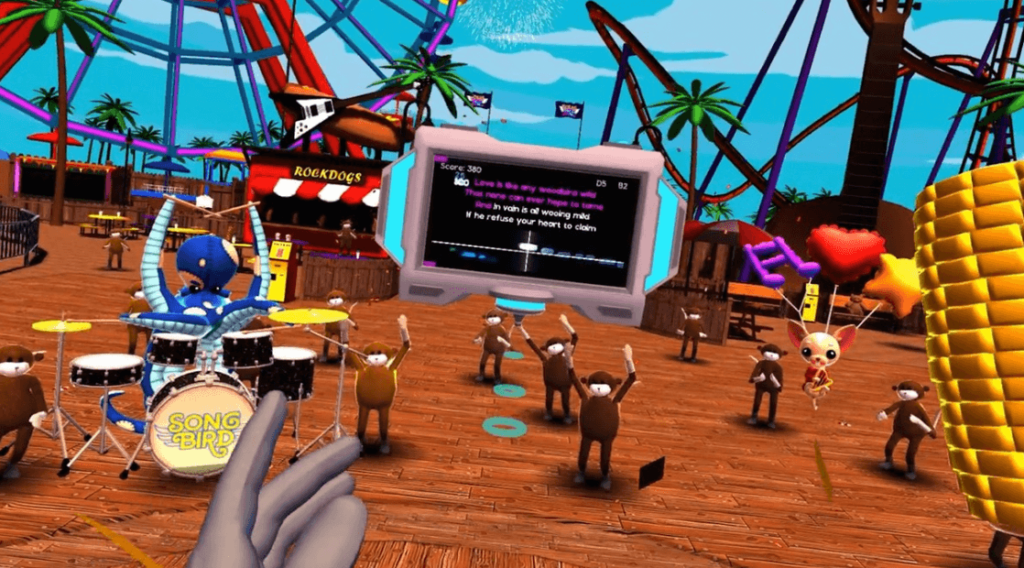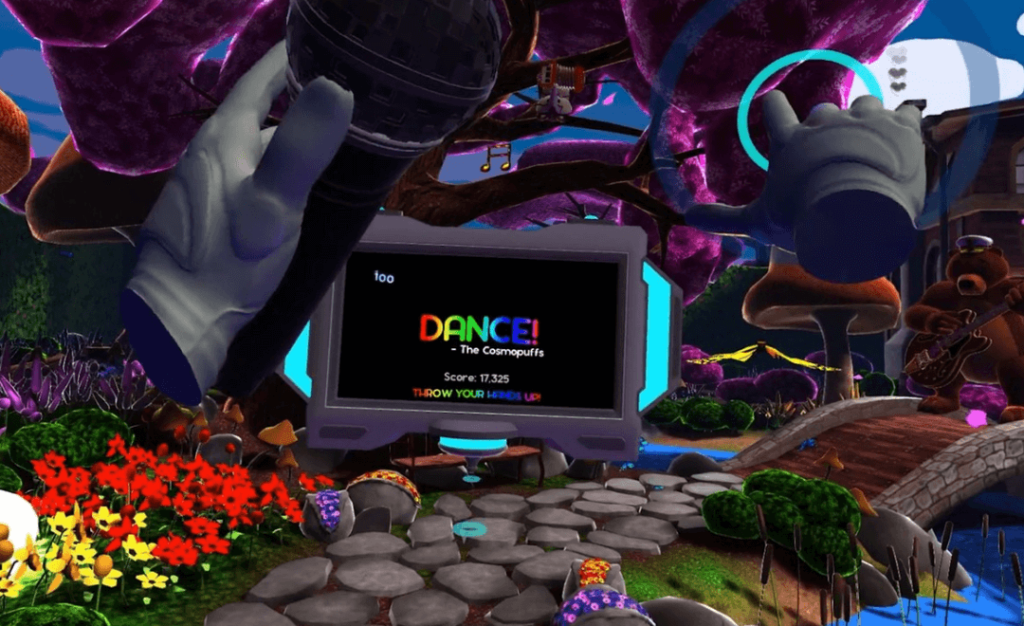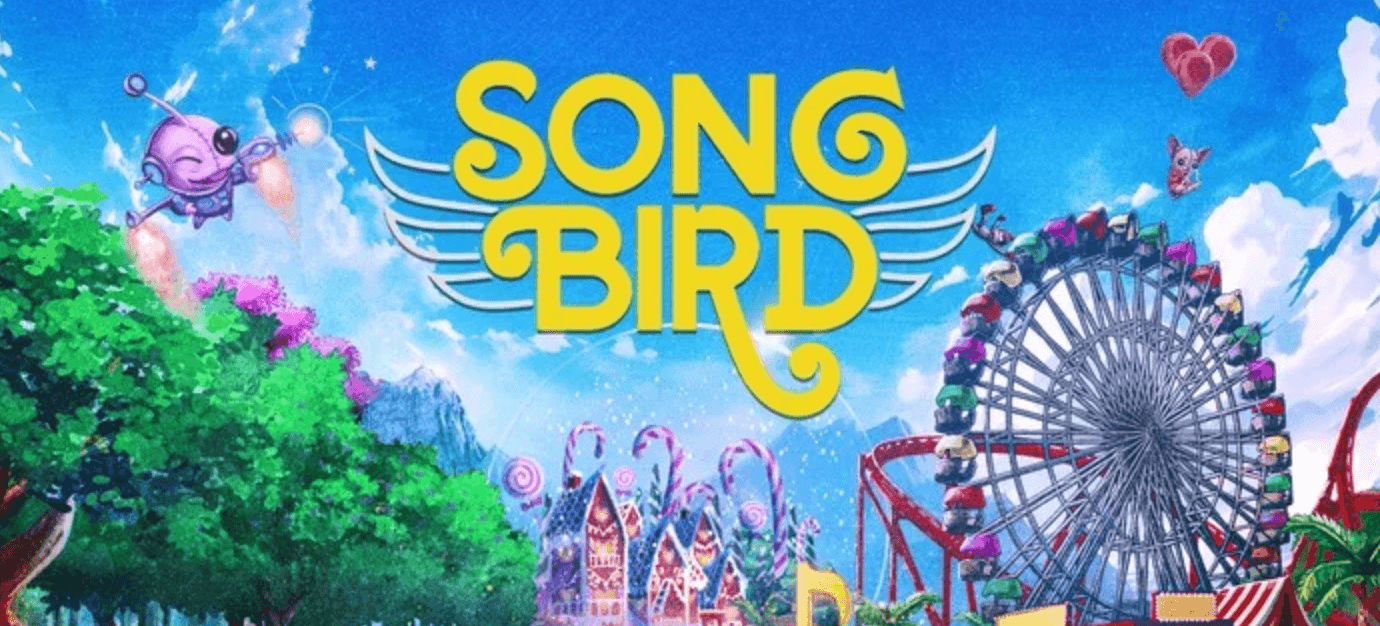Virtual reality has long promised to redefine how we connect—through games, social spaces, and now, music. Enter Songbird, a VR karaoke experience that transforms living rooms into neon-lit stages. But this isn’t just singing into a headset. It’s a fusion of cutting-edge hardware—like Bigscreen Beyond 2’s expanded FOV and pancake lenses—and real-time vocal analysis, creating a feedback loop where your pitch-perfect notes light up virtual crowds.
Where Music Meets Immersion
Why does this matter? Karaoke thrives on vulnerability, yet stage fright silences many. Songbird sidesteps that by letting users perform in customizable avatars, backed by reactive environments (think: fireworks for high scores). Imagine belting ‘Bohemian Rhapsody’ as a holographic dragon soars overhead—no judgment, just pure adrenaline. It’s Half-Life 2 RTX’s tech-driven nostalgia, but for music lovers.

The timing isn’t accidental. With VR headsets selling faster than ever (Bigscreen Beyond 2 pre-orders surged 200% post-announcement), Songbird taps into a craving for shared, immersive joy. Unlike passive streaming, it’s participatory—a bridge between solo gaming and live concerts. Ready to trade your shower mic for a spotlight?
Precision, Performance, and Pancake Lenses
Songbird’s secret weapon isn’t just its song catalog—it’s the symbiotic relationship between hardware and software. Bigscreen Beyond 2’s 120° field-of-view (up from 90° in its predecessor) eliminates the ‘goggles effect,’ wrapping users in a seamless stage environment. Pancake lenses sharpen text readability by 40% (Road to VR, 2025), critical for reading lyrics mid-belter. But latency is karaoke’s nemesis: a 20ms delay can derail rhythm. Songbird syncs audio-visual feedback to under 10ms by leveraging SteamVR’s tracking API—comparable to Half-Life 2 RTX’s GPU-driven optimizations (GamingBible, 2025).
Vocal scoring isn’t mere pitch matching. The game analyzes vibrato consistency, breath control, and dynamic range, grading on a 0-100 ‘Soul Scale.’ Hit 90+? The crowd chants your avatar’s name. Below 60? They’ll playfully boo—unless you enable ‘Zen Mode,’ which replaces judgmental audiences with serene landscapes. Pro tip: Warm up with ballads first. Sustained notes (like in Adele’s ‘Hello’) train vocal stability, which the algorithm rewards.

Customization drives replayability. Users don’t just pick avatars—they design stages. Import 3D models via Steam Workshop (a nod to Half-Life 2 RTX’s modding community) or choose presets: jazz lounges with reactive lighting, alien coliseums where hit notes trigger holographic explosions. One beta tester transformed their space into a replica of Tokyo’s Karaoke Kan, complete with virtual sake bottles that ‘clink’ when toast gestures are detected.
Multiplayer bridges isolation. Unlike Silksong’s perpetually delayed co-op (Rock Paper Shotgun, 2025), Songbird launched with cross-platform duets. Two players can harmonize in real-time, their avatars sharing a stage even if one uses a Bigscreen Beyond 2 and another a Quest 3. Latency tests show a 15ms inter-device delay—barely perceptible, thanks to NVIDIA’s AI frame interpolation, repurposed from Half-Life 2 RTX’s remaster.
But hardware limits persist. The Beyond 2’s 5K displays demand a RTX 4080 or equivalent—overkill for casual users. Workaround? Songbird offers a ‘Streamer Mode’ that renders stages at 60fps instead of 120fps, freeing GPU headroom for vocal processing. One user reported a 30% performance boost by disabling crowd physics during high-octane tracks like ‘Don’t Stop Me Now.’
The ‘fear factor’ is real. 68% of beta testers admitted anxiety singing in front of friends—until they used anonymized avatars. One parent, masked as a pixelated owl, performed ‘Let It Go’ for their child’s virtual birthday party. Songbird’s answer to stage fright? Let users control visibility: perform to a packed arena or an empty room that fills as confidence grows.
Conclusion: Redefining Connection Through Voice
Songbird isn’t just a game—it’s a blueprint for VR’s next act. While titles like The Knightling chase Zelda-inspired solo adventures (Nintendo Life, 2025), Songbird answers a hunger for collaborative creativity. Its success hinges on balancing technical precision with emotional accessibility. Want proof? Bigscreen Beyond 2’s 200% pre-order spike signals a market primed for immersive social apps, not just games.
Actionable takeaway: Treat VR as a vocal gym. Use Songbird’s Zen Mode to practice breath control, then graduate to crowds. Cross-platform duets (unlike Silksong’s absent co-op) let you harmonize globally—no Quest vs. PC VR divides. Pro tip: Pair NVIDIA’s AI frame interpolation (pioneered in Half-Life 2 RTX) with Streamer Mode to maximize performance on mid-tier rigs.

The broader lesson? Anonymity empowers artistry. 68% of anxious beta testers sang freely once masked—proof that VR can democratize performance. Future updates could integrate user-generated stages into live concerts, blending Songbird’s modding ethos with real-world venues. Imagine belting ‘Born This Way’ in a virtual Met Gala designed by fans.
VR’s future isn’t just headsets—it’s shared stages. Songbird proves that when tech amplifies human connection, even off-key notes become part of the symphony. Ready to find your voice?

